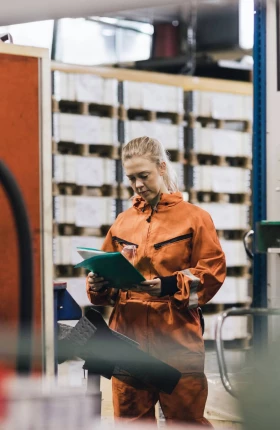The devastating crises of the past few years—the pandemic, severe weather caused by climate change, and the economic fallout of the war in Ukraine—really woke up a lot of developing countries and led them to conclude, “We’re on our own. We need to find solutions to our food systems problems ourselves.”
Out of this awakening, we are seeing some exciting partnerships aimed at transforming the global food system. People around the world who are going through similar struggles are reaching out to help each other build more sustainable and resilient food systems. And they’re approaching donors with a more unified voice and well-developed strategies for addressing challenges. We saw some of this at the recent COP summits, where developing nations put climate adaptation and resilience high on the agenda by advocating for loss and damage funds and support to develop disease- and drought-resistant crops.
The most exciting development for me is the growing recognition that we need to make some drastic changes to the status quo if we are to sustainably produce enough food to feed the world. We’re starting to see a meeting of the minds on the need to combine what we can learn from the large-scale Global North production systems with what we can learn from indigenous production systems that have historically been better at adapting to local resources and conditions. The food production machinery of the Global North is extraordinarily efficient. But it is not always very effective at producing nutritious, affordable, and diverse foods in a sustainable way (and it is heavily reliant on immense subsidies).
People around the world who are going through similar struggles are reaching out to help each other build more sustainable and resilient food systems. And they’re approaching donors with a more unified voice and well-developed strategies for addressing challenges.
A good example of this shift is the growing focus on high-yield, disease-resistant, drought-resistant crops—not just for the common staples, like rice, wheat, and maize, but for the whole food basket. For instance, we’re seeing a return to indigenous staples like millet and sorghum in many parts of Africa. Countries are having open dialogues about this, which wasn’t the case even several years ago. We’re seeing clarion calls for investment and R&D in these kinds of food systems. And more encouragingly, we’re seeing large corporations start to understand that you need to balance short-term profits and long-term resilience, especially in the Global South, in an evolving climate situation.
Over the past year and a half, I’ve been involved in projects that seek to strengthen pastoral livestock production in Africa. As part of these projects, we hope to serve nomadic livestock keepers, who are part of severely marginalized communities, both geographically and economically. They’ve been disproportionately affected by droughts and have been losing access to indigenous grazing lands.
Yet in Africa, these pastoralists are absolutely critical for animal protein production. They supply anywhere from 50% to 90% of the meat and 50% to 60% of the milk consumed across the continent. They’re adept at making the best use of what they have to work with and adapting to local climate conditions.
What’s particularly exciting for me are emerging opportunities to bridge the big divide between the private sector and these small agricultural producers. We’re starting to see connections between them shape up in several ways.
There’s an interesting pilot in Ethiopia. Luna, a slaughterhouse, is starting to work directly with pastoralists to help them raise livestock sustainably, enabling the company to secure animals more consistently. The idea is to help pastoralists cultivate smaller, healthier herds to help satisfy growing demand for animal-sourced proteins and foods—but without placing additional stress on already-limited resources.
Luna will help them grow the right types of feed and fodder, get access to the right drugs and vaccines needed to keep the animals healthy, and raise them to the right maturity. Luna also collaborates with local animal health workers to build a supportive ecosystem. It then purchases their livestock and processes them.
This model is inherently more sustainable in the long run, and an excellent example of using catalytic philanthropic capital to transform parts of the food system. In addition, Luna is investing its own money to put in place structures that can benefit everyone. And now donors are coming in with support. If this project is successful, I’m hopeful it can be replicated in many other places.
We’re also starting to see more spillover, where something that works well in one context is applied to another. A number of people are asking how they can learn from companies like DeHaat in India, for example.
Indian agriculture is something on the order of a $300 billion industry. Yet most food is grown by very small farmers. Some may have only five acres of land. What they need are focused interventions that help them navigate all the complexities the world is throwing at them, whether pandemics, natural disasters, or a lack of capital.
DeHaat, which has been around for about ten years, is an end-to-end market integrator for smallholder farmers that’s doing tremendous work. The company provides farmers with inputs, like fertilizers and seeds, based on local conditions. It also provides working capital, technical support, and advisory services. And, most important, DeHaat finds buyers for their crops.
DeHaat’s business model is reaching a large scale. The company is now valued at over $700 million and serves 1.5 million farmers in India. I think lessons we’re learning through DeHaat can be applied in Ethiopia, Kenya, or Nigeria.
It all adds up to a big shift in mindset. The Global South is coming together to find ways to collectively fix challenges we are facing. There’s never been a more exciting opportunity to transform our food systems so we can all have access to nutritious, affordable products.








